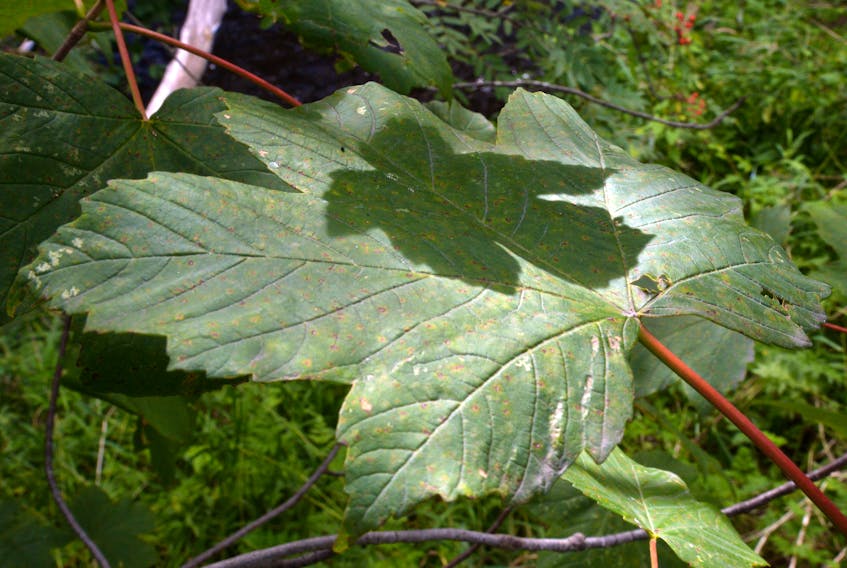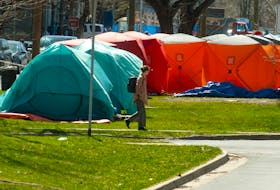ST. JOHN'S, N.L. — It was a generally warm and sunny August, but judging by many trees in the city, it looked more like October.
City of St. John’s arborist Brian Mercer said he has received numerous inquiries over the past couple of weeks about trees losing their leaves unseasonably early this year.
Mercer said it seemed to mostly affect Norway maples, which appear to be suffering from a combination of issues.
First, they were exposed to heavy snow loads in the winter.
“Snow loading can cause branches to break, creating entry points for disease and decay,” he explained.
“It also results in a lot of salt and road debris being dumped over the root system of the tree. This can dehydrate trees in the spring when they need water to produce leaves, flowers and initiate seasonal growth.”

With the trees already under stress as spring arrived, fungus and insects such as aphids and leafroller moths further exacerbated the problem. Mercer said, typically, a minor amount of insect activity and fungus doesn’t affect a tree’s health too much, but it can be a concern for a tree that is already stressed.
Finally, it’s been a relatively dry summer, despite a few significant rainy days.
“We haven’t had a great distribution or accumulation of rain this summer,” said Mercer.
“This has resulted in dry soils that are not providing enough moisture to maintain tree health. This can be further compounded in areas where the depth of soil available is low, and the capacity to store water is low.”
“I believe the majority of these trees will recover." — City of St. John's arborist Brian Mercer
When exposed to unfavourable conditions such as those, trees can enter dormancy early as a natural survival mechanism. When this happens, trees will lose their leaves.
“I believe the majority of these trees will recover, but I’d recommend, if possible, to ensure trees receive continued watering, making sure the soil around the tree stays moist,” said Mercer.









